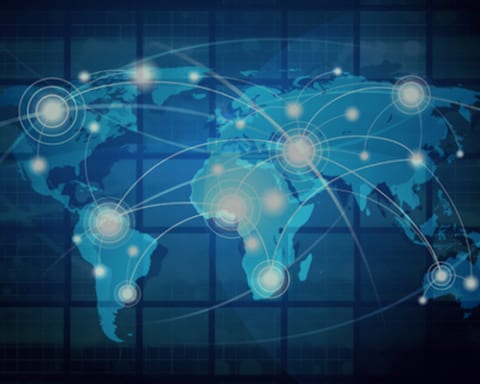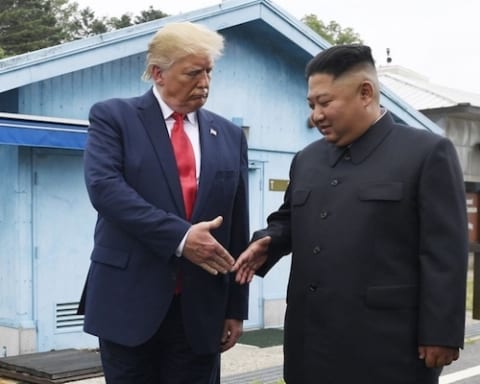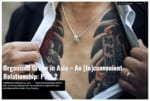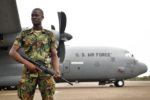There is an escalating crisis in Southeast Asia. A crisis developing from the symbiosis of organised crime, terrorism and the covert domestic and foreign policy ambitions of several Asian nations. Dr. Gary K. Busch examines organised crime and international politics in Asia — Part 1: The Subcontinent (India and Pakistan).
On June 19, 2017, the United Nations Office on Drugs and Crime (UNODC) organised a General Assembly debate to warn that crime groups are globalising and are now primary threats to security and development. The debate also featured a special briefing on Southeast Asia, a region that is particularly vulnerable to the reach and influence of organised crime.
The study found that transnational organised crime groups have expanded their operations to this illicit traffic and are engaged in smuggling drugs, people, weapons, counterfeit goods, and even timber and wildlife across borders. The conservative annual estimated value of this regional illicit market is a staggering US$100 billion dollars. The regional illicit drug market is estimated to be worth over US$30 billion per year.
With organised crime groups in China, the Triads, producing and trafficking significant quantities of methamphetamine into and throughout the region, Southeast Asia is now the world’s largest methamphetamine market. Southeast Asia is also the second largest opium and heroin market, with the majority of heroin being produced inside the so called Golden Triangle area of northern Myanmar and parts of Laos. The overall production and trafficking of drugs generally hinges on widespread government corruption, weaknesses in the cooperation between regional law enforcement agencies, and the absence of restrictions and regulations towards access to necessary chemicals.

Southeast Asia’s markets are not only confined to the region but extend to Europe, North America and especially, Africa. The word used for methamphetamine in Africa is “tik”- that is methamphetamine in a powdered crystalline form. It is widely distributed by Asian organised crime gangs from Pakistan and the Chinese Triads. Indian organised crime gangs specialise in “Mandrax”. After its discovery in 1950, mandrax abuse became the legal way to get high. It produces a state of euphoria and sensual or intimate moods.
With this in mind, there is little wonder as to why the drugs are as popular as they are. Thousands, if not tens of thousands of both legitimate and black market pharmaceutical firms produce and distribute drugs throughout India, usually through the major Indian logistics hubs, Delhi, Maharashtra and Rajasthan. It costs only 99 paise (about 4 cents) to manufacture one tablet of Methaqualone (sold under the brand name Quaalude and Mandrax), which can then be sold for around Rs. 40 (about 50 cents) on the market. With profits like that, it is near impossible for South Asian governments to stop it.
India is just one, albeit large, part of the equation. The drug lords of Myanmar have used the availability of modern pharmaceutical production capabilities to no longer be dependent on their traditional product— heroin and opium. Instead, they are hitching their wagon to a small pink tablet which contains a mixture of methamphetamine and caffeine. In Thailand the tablet is known as “Ya ba” while in Malaysia it is known as “pil kuda”. Each year, two to six billion pills are exported from these labs reaching the hands of users in neighbouring Thailand, China, and more recently Bangladesh.
With many of the ruling parties in the nations of Southeast Asia consisting of military regimes or regimes dominated by the military, there has been a concomitant growth in the symbiosis of these governments and organised crime. Groups like the Triads, the warlords of the Shan States, the Afghan Pashtun mafia and the international criminal gangs of India and Pakistan have prospered under this relationship. While not an entirely new phenomenon, it has also opened the door wider to the massive funding of Islamic terrorist groups which exist in the same political space. The payoff for militaries in tolerating and working with terrorists and organised crime has been a surge in their revenues and the ability to use these groups as covert mercenaries in the subversion of their neighbours and throughout the worldwide community.
![Image [Thailand makes one of its 'largest ever' crystal methamphetamine busts seizing US $22.42 million worth of the drug; news conference in Bangkok, Thailand April 3, 2018. REUTERS / Panu Wongcha-um]](https://limacharlienews.com/wp-content/uploads/2019/02/Thailand-drug-seizure.jpg)
D-Company is a coalition of criminal and Islamic terror groups based around its leader, Dawood Ibrahim
Enter ‘D-Company’
The impact of this relationship became evident to the wider world in March 1993 with a series of 12 explosions in Bombay, India (now known as Mumbai). Following local riots and disorders emanating from India’s secular divide, a series of thirteen bombs were exploded resulting in 257 fatalities and 713 injuries. These attacks were co-ordinated by the largest organised crime gang in the area, known as “D-Company”.
However, the planning, funding and direction of this bombing campaign lay elsewhere. Across the border in Pakistan, the ISI Department of the Pakistan Army had controlled and directed the attacks. The D-Company leadership of the bombings included its leader, Dawood Ibrahim, and the brothers Tiger Memon and Yakub Memon. Dawood and Tiger Memon escaped, but Yakub was caught and later executed.
Indian security authorities had been on a high state of readiness before the bombings, yet failed to use clear evidence they had before them. Three days before the bombing police had apprehended a criminal tied to the personal team of Tiger Memon, ‘Gullu’ (Gul Noor Mohammad Sheikh). He had just returned from Pakistan and had been trained by the ISI in terrorist tactics. He was one of nineteen such trainees sent by Tiger Memon to Pakistan. When apprehended at Nav Pada police station, Gullu confessed his training in Pakistan and revealed the bombing plot. The police ignored his confession.
After the bombings and the international outrage at the enormity of the attack on India the police arrested hundreds of suspects. In a subsequent trial a hundred of the accused were found guilty and sentenced to long terms in prison. In reality, many of the convicted just disappeared rather than serve a sentence, including Tiger Menon, the mastermind of the bombings. Those who were detained often had their sentences diminished or quashed. The Muslim ones tied to Pakistan who were caught were incarcerated by Indian police, but many members of the Mumbai underworld, who had worked closely with the Hindu regional authorities, found their sentences less onerous.
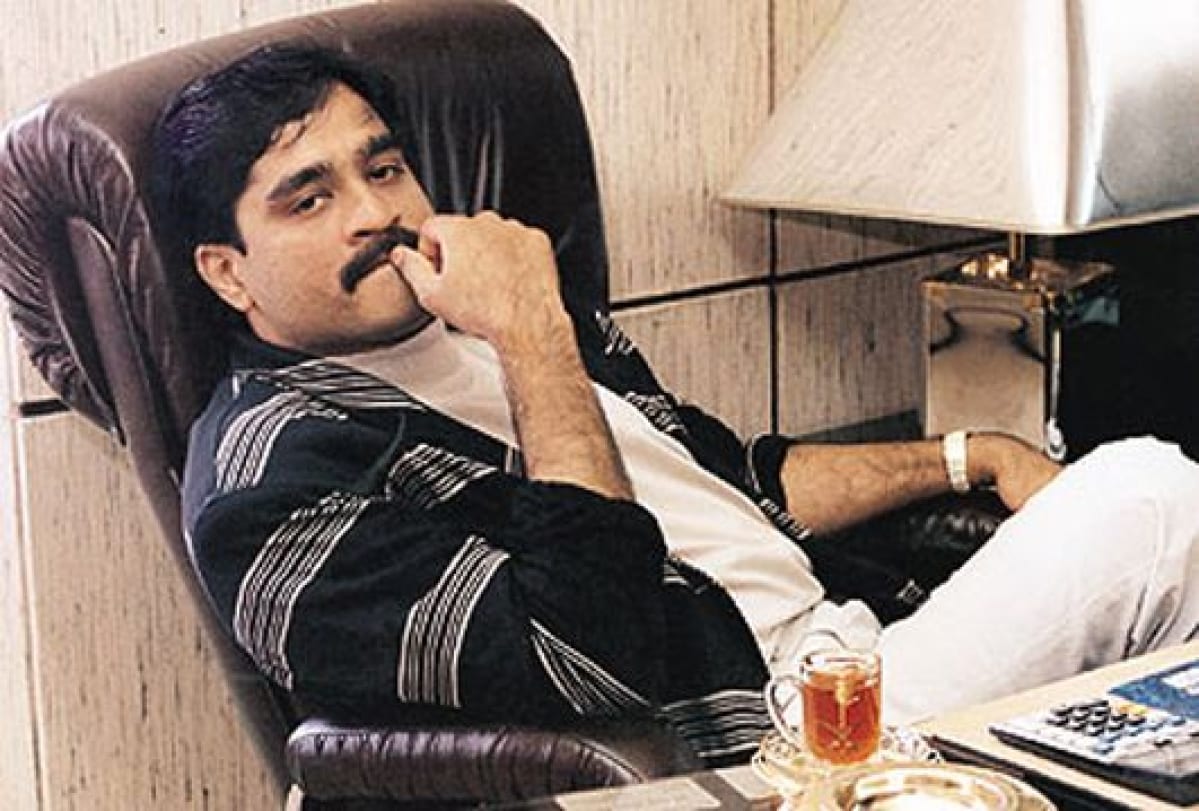
The ensuing gang war between Muslim and Hindu criminals took the lives of more than a hundred gangsters and still continues. Seven of D-Company accused (Salim Kurla, Majeed Khan, Shakil Ahmed, Mohammed Jindran, Hanif Kadawala, Akbar Abu Sama Khan and Mohammed Latif) were assassinated by Rajan’s hitmen.
There has also been a growing symbiosis of Indian and Pakistani organised crime gangs and the security arms of the two rival nations. This symbiosis has expanded, especially in Pakistan, with ties between organised crime, Islamic terrorist groups and underground criminal enterprises of drug smuggling, counterfeit currency smuggling, illegal pharmaceutical smuggling and a web of international criminal and terrorist ties across the globe in support of these enterprises. This has spread across Southeast Asia.
Control is exercised by the brutal assassinations of his competitors, in addition to international trade in narcotics, smuggling and quasi-legitimate businesses.
India’s Organised Crime – a Background
There were organised gangs of ‘thugs’ in India for years (the term ‘thug’ is an Indian word). A ‘thug’ was a member of an organization of robbers and assassins; devotees of the goddess Kali. The Thugs waylaid and strangled their victims, usually travellers, in a ritually prescribed manner. They were suppressed by the British in the 1830s. This violent aspect of Indian criminality was only a small branch of the tree of crime.
Most of Indian crime consisted of supplying goods, credit and services which were unavailable or outlawed by the various governmental organisations. This included kidnapping and ransoming rich Indians, and ‘shylocking’ among the rural and urban poor to whom the ‘zamindars’ (tax collectors and landowners) had shown little mercy or credit. Some of the bandits (better known as ‘dacoits’), like Man Singh, became legends in their lifetime due to their Robin-hood image of giving stolen money to the poor.
When India became independent many of the states which were formed were ‘dry’ states; alcohol was banned. This Indian Prohibition resulted, as it did in the U.S. and, later Russia, in a windfall of profits for the criminal communities. This illicit sale of alcohol has continued during the succeeding prohibitions both nationally and regionally.
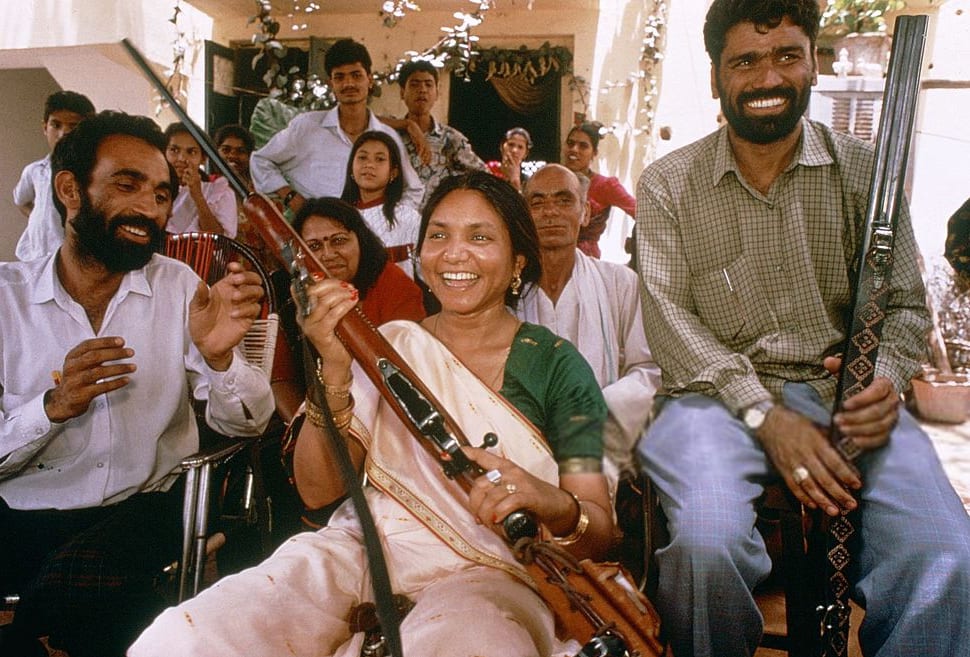
Mumbai Central
India remains a major transit point for heroin from the Golden Triangle (Shan states) and Golden Crescent (Iran, Afghanistan and Pakistan) en route to Europe. India is also the world’s largest legal grower of opium, and experts estimate that 5–10% of the legal opium is converted into illegal heroin and an additional 8–10% is consumed in high quantities as concentrated liquid. The pharmaceutical industry is also responsible for a lot of illegal production of mandrax, much of which is smuggled into South Africa. Diamond smuggling via South Africa is also a major criminal activity. In addition, a lot of money laundering takes place within the country, and with the Middle East mostly through the use of the traditional ‘hawala’ system. The traditional illegal import of 10-tola bars of gold from the Gulf into India is a business which has gone on for centuries.
Indian organised crime has multiple centres. The criminal empires are usually found inside major cities, with perhaps the most important such centre being in Mumbai. In 1947, the aftermath of Indian independence from the British empire, the Government of Maharashtra cracked down on the trade of alcohol. This in turn made bootlegging an incredibly lucrative business for emerging criminal groups. The first such group to rise to notoriety was headed by Varada Rajan Mudaliar, popularly known as Vardha bhai. Mudaliar was a Mumbai-based ethnic Hindu who started as a porter at the VT Railway Station, and took to thievery at the Bombay docks. Under Varada’s guidance, his group of thieves would graduate to bootlegging in the early 1960s. These activities enabled him to acquire great wealth, becoming an influential individual in Indian society to the point that he would hold “durbars” in his area, to settle disputes.
Another such gang was headed by Karim Lala, who commanded the majority of smuggling and illegal construction financing in south and central Mumbai. Karim Lala and his group, consisting primarily of family members, emerged as a dangerous entity in the city in 1940. Their focus on hashish trafficking, protection rackets, extortion, illegal gambling, gold smuggling and contract killing enabled them to take a central role in the Mumbai underworld. The group, which consisted mainly of individuals which were ethnic Pashtuns from Afghanistan’s Kunar province, was often referred to as the Pathan or Afghan mafia as they operated out of the Mumbai docks. By 1985 the group had become the indubitable kings of the trade.
Other, often competing entities, followed much the same trajectory. Haji Mastan, who had begun as a member of the Karim Lala gang, and Yusuf Patel both began as mere small-time criminals only to become notoriously successful gold and silver smugglers. Like many others of the era, both sought a modicum of legitimacy by vesting portions of their ill-gotten gains into legitimate businesses, mainly the booming trades of construction and real-estate. Mastan would go on to become the first “celebrity mobster” of Mumbai. He invested large sums of money into the emerging Bollywood film production market. As his influence grew, he would come to take an active part in the production of films himself.
These Mafia leaders found that the traditional forms of criminality were no longer the best routes to fortune and power as India began to open up into an entrepreneurial giant. Their place as leaders of the criminal underworld were challenged by younger and more aggressive criminals. After a decade of violence, a new leadership took over and moved away from the criminal pursuits of their former leaders. They began to adapt to India’s new capitalist opportunities, using their cash to finance otherwise unfinanceable deals.
![Image [Rajendra Sadashiv Nikalje, popularly known as Chhota Rajan, served as the boss of a major crime syndicate based in Mumbai. He is currently serving a life sentence at Taloja Jail in Navi Mumbai.]](https://limacharlienews.com/wp-content/uploads/2019/02/Chhota-Rajan.jpg)
Ibrahim spends most of his time in Pakistan where he is protected by the Pakistani Army. When he lived in Dubai it frequently refused to extradite him. He was early in realising the opportunities a developing India presented. He used his funds to invest in legitimate and almost-legitimate businesses. Financing illegal construction projects earned him high revenues and providing finance for Bollywood films earned him even more.
Dawood’s brother, Anees Ibrahim (or Anis, a.k.a Shaikh Anis Ibrahim Kaskar), operates the drug and contract killing operations, whereas Noora Ibrahim – before being shot dead in 2009 – operated film financing and extortion from media personalities. Iqbal Ibrahim holds a significantly lower profile, instead focusing on appearing to be the legitimate side of the family. His businesses includes noteworthy holdings on the Hong Kong stock exchange as well as jewelry and gold businesses. All in all, the gang consists of about 4,000 to 5,000 men (most of which come from the Muslim areas of Mumbai and neighbouring districts). A further 25% of the group is believed to originate from the Muslim outskirts of the Uttar Pradesh area.
Today D-Company has a wide criminal portfolio, with contract killing, drug trafficking, smuggling computer parts and illicit trade in arms and ammunitions making up the major areas of endeavour. They have been supplying arms both to criminals and terrorists. Dawood Ibrahim has invested heavily in projects like the Diwan Shopping Centre in Mumbai and is also said to have financial stakes in the Diamond Rock Hotel in Mumbai. Noora runs Suhail Travel in Mumbai. Dawood reportedly has huge financial stakes in East West Airlines.
Unfortunately, Dawood mixed crime with politics. After the 1993 Bombay bombings, which Ibrahim allegedly organised and financed with Tiger Memon, both became India’s most wanted men. According to the United States Department of Treasury, Ibrahim had ties with Osama bin Laden. As a consequence, the United States declared Ibrahim a “Specially Designated Global Terrorist” in 2003 and pursued the matter before the United Nations in an attempt to freeze his assets around the world and crack down on his operations. In 2015, Dawood’s brother Anees was also added to the U.S. Treasury’s designation as Specially Designated Narcotics Traffickers pursuant to the Foreign Narcotics Kingpin Designation Act (Kingpin Act) due to his ties to D-Company.
Indian and Russian intelligence agencies have pointed out Dawood’s possible involvement in several other terror attacks, including the 2008 Mumbai attacks, as per Interpol. In 2010, a US Congressional report claimed that “D-company has a ‘strategic alliance’ with Pakistan’s ISI”. Ever since he took to hiding, his location has been frequently traced to Karachi, Pakistan, a claim which Pakistani authorities have denied.
![Image [US Department of the Treasury, Office of Foreign Assets Control (OFAC) entry for Dawood Ibrahim, July 13 2006]](https://limacharlienews.com/wp-content/uploads/2019/02/US-Department-of-the-Treasury-OFAC-Dawood-Ibrahim-July-13-2006-.jpg)
Today, Gawli operates his own political party, the Akil Bhartiya Sena. The party has gained a great deal of support among the Mumbai slum dwellers. However, as his profile rose he was found guilty of the 2007 murder of a political rival, Shiv Sena leader Kamalakar Jamsandekar. In August 2012, Gawli was sentenced to life in prison, along with several of his associates. Since then, his group has been involved in violently contesting the turf of D-Company.
![Image [Arun Gawli, Indian politician, underworld don and former gangster.]](https://limacharlienews.com/wp-content/uploads/2019/02/Arun-Gawli.jpg)
The fourth major criminal group in Mumbai is the Chhota Rajan Gang, headed by Chhota Rajan, who began as part of the Dawood gang. In 1993, he had a falling out with Dawood, forming his own gang which consists of mainly Hindus. Their focus appears to have been on the illicit drug trade, which put him at odds with his former boss. As a result of several attempts on his life, Rajan relocated the majority of his operations to the Gulf area.
There are hundreds of smaller criminal gangs across the vast territory of India and in its major cities like Bangalore, Chennai, Hyderabad, Mangalore, and Calcutta. Goa is one of the major hubs of the international drug trade where the Indian Mafia has joined up with Russian, Israeli and Nigerian criminal groups involved in the trade.
Many more criminal groups, significantly smaller and less well organised, continue to operate. In recent years, the Indian and Punjab mafia groups expanded internationally, with Canada appearing to be a focal point.
[To read more about this, I recommend the Infogalactic entry on Indo-Canadian organised crime.]
In recent years, several members of the Mumbai criminal gangs have been arrested in Thailand, Indonesia and Dubai and sent back to India for trial. Many more were gunned down as contract killers from rival gangs. Others suffered from the communalism in the security forces’ response to D-Company. Several properties of Dawood in India have been seized and confiscated to the extent that none of his aides can live in local properties. Dawood lives in ostracism, surrounded by troops in Pakistan with little to no chance of his return. Many of Dawood’s aides have either been eliminated by state police or have been executed. Abu Salem remains in the custody of the Indian government and stands a very slim chance of making any comeback, while Chhota Rajan has also been in the custody of the Indian government for few years now. The recent gang members convicted of the train blast of 2006 have received harsh punishment.
![Image [D-Company, courtesy of U.S. Department of the Treasury, Office of Foreign Assets Control (OFAC)]](https://limacharlienews.com/wp-content/uploads/2019/02/Screen-Shot-2019-02-08-at-8.22.35-PM.jpg)
Pakistan’s Role in the Security-Crime Symbiosis
One of the most difficult aspects of the symbiosis of organised crime and the security forces of Asia is the appreciation of the domination of the military and security forces over the political and economic structures of the countries in which they rule. Perhaps the best, and the most germane case, is Pakistan.
Pakistan has the world’s sixth-largest standing army, at 653,800 strong. However, as many third world armies, its upper echelon of officers have long since realised the advantages of focusing their attention, and powers, on commercial ventures. As a result, since its independence in 1947, Pakistan has seen its military leadership interject itself not just in the political scene of the country, but in its economy. This has grown to a point where it can be difficult to tell the military apart from the nation’s pseudo-free-market.
This dynamic is fairly well documented. For instance, Dr. Ayesha Siddiqa wrote in her 2007 book Military Inc: Inside Pakistan’s Military Economy an extensive expose of the problem. Dr. Siddiqa estimated the military leadership’s net worth at more than £10 billion. If accurate, that would make the leadership’s net worth four times the total amount of foreign direct investments generated by Islamabad in 2007. The book also details that the army owns roughly 12 per cent of Pakistan’s land, most of which being the most fertile land areas in a country with little of it to spare.
Yet more disturbing is Dr. Siddiqa’s finding that the majority of Pakistan’s largest corporations are in fact controlled to a large extent by retired military personnel through foundations. The three largest foundations in Pakistan, at least in 2007, Fauji, Shaheen and Bahria, were all controlled by retirees from the highest echelons of the Army, Air Force and Navy respectively. All in all, these holdings represent billions of pounds worth of value.
[Read more about the topic in Dr. Saddiqa’s excellent book and this Spectator article from January-2008.]
There is a deep and strong interlink between the Pakistani Army, organised crime (especially D-Company) and Islamic terrorist groups operating out of Pakistan on behalf of the military’s irregular war against its neighbours in India and Afghanistan.
Dawood Ibrahim still controls one of the most comprehensive organized crime networks in Mumbai with deep collusive roots among elements of Maharashtra’s political leadership. Meanwhile, D-Company has become a major Inter-Services Intelligence (ISI) asset and a continuous collaborator with the Lashkar-e-Taiba (LeT) and other Pakistan-backed terrorist groups, facilitating the movement of arms and explosives, as well as of finances across international boundaries. It is useful in this context to briefly examine the sheer multiplicity of sources of finance for Islamist terrorist groups operating in India, and the near impossibility of effectively targeting these networks.
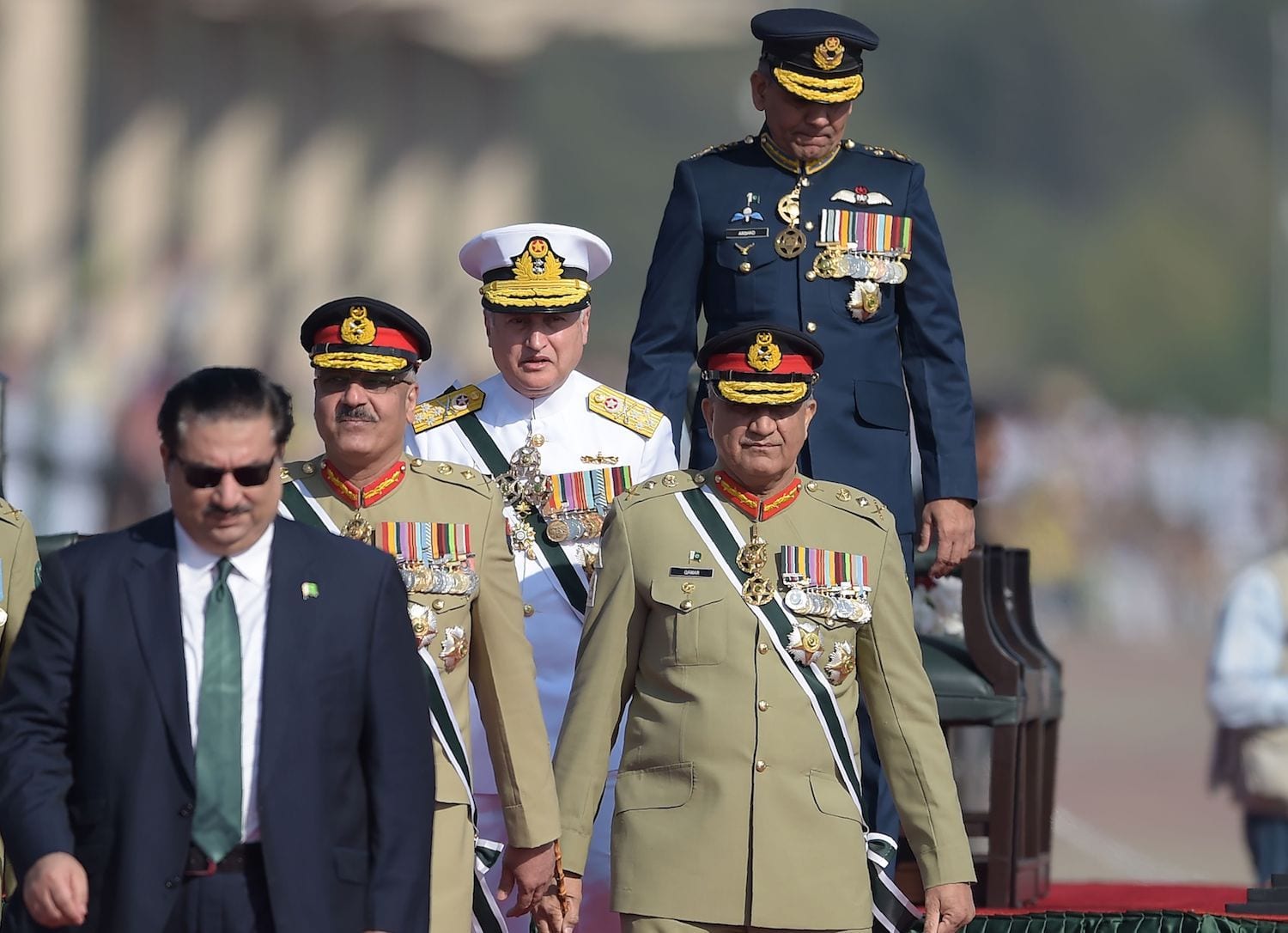
In April 2009, an article titled “Blood Money” published in Defence & Security of India, reported that estimates suggest approximately 120 million to 130 million INR (Indian rupees) in counterfeit money were smuggled annually through clandestine Pakistani intelligence channels, and that some estimates believe that 25 per cent of India’s total currency in circulation could be fake. The article details how the money is injected into the Indian economy, the logistics of the operation and the likely relations that the Pakistani security agencies have with organised crime and terrorism in India. “Blood Money” is required reading for those interested in the topic.
Unsurprisingly, the fundamental basis for these money laundering networks and injection of forged currency is the “hawala” system. In its most basic variant, Hawala is a worldwide honour-based system where money is transferred in cash or goods between Hawala brokers, or hawaladers. The use of these networks is one that Jihadist organisations often rely on to fund their operations. While Hawala does not have to equal money laundering, it is undeniable that it is often utilised to help facilitate this. There are many reports of how the system has been used to help the conversion of illegal and ill-gotten money into legal money so that it can be intergrated into a legitimate economy.
One of the keys to its growth has been the Pakistani military presence in Afghanistan and the “Tribal Territories”. Pakistan’s military does what it wants in Afghanistan, just as it does in Pakistan. That is not a secret because about half of the time since Pakistan was created in 1947 the military has openly run the government until popular opposition forced its generals to allow elections again. Terrorism related deaths are overwhelmingly caused by the Islamic terrorists, mainly Taliban and Haqqani Network attacks. To maintain control of the Afghan Taliban, the ISI calls on another of its “protected” Islamic terror groups, the Haqqani Network. This group was once a faction in the 1990s Afghan civil war but always had a good relationship with the ISI.
![Image [Jalaluddin Haqqani (c), former head of the Haqqani network]](https://limacharlienews.com/wp-content/uploads/2019/02/Haqqani.png)
However, on December 19, 2018 President Trump announced the removal of a substantial number of troops from Afghanistan. The US military will quickly pull nearly half of its forces from Afghanistan, and likely withdraw the rest by the end of 2019. This proclamation was an outright victory for the Taliban, al Qaida and other jihadists, opening the door to Pakistan’s ISI domination of the criminal and terrorist links in both countries. This will have a dramatic effect on the Kashmir-Jammu battle between India and Pakistan.
As stated by Thomas Joscelyn and Bill Roggio in “The costs of withdrawal from Afghanistan” (Long War Journal, December 21, 2018): “Pakistan’s use of jihadism as a foreign policy tool has been validated. Pakistan also has much to gain from a US withdrawal. It says much about America’s ineptitude and confusion that not a single Pakistani official was ever sanctioned or designated as a terror supporter throughout 17+ years of war. Besides the Trump administration’s decision to withhold some military aid, Pakistani officials never paid a real price for harbouring the same forces that were attacking Americans and their allies.”
Pakistan’s use of jihadists to advance its goals on a geostrategic level throughout the region appears thus fairly well cemented. Its intelligence service sponsorship and usage of the Taliban and other similar groups have long been part of the Pakistani regional security strategy. This is not a clean strategy to apply, which is self-evident in the fact that a large number of Pakistani soldiers and officials have themselves fallen to the same groups that their intelligence and military uses. Despite this, the Pakistani military and intelligence organisations continue to export jihad to countries and regions which they seek to disrupt, most notably the Indian state of Kashmir.
In the past few years it has become more difficult for state-sponsors of terrorism to maintain direct links to terrorist organisations as the threat of sanctions and economic pressure from the West has expanded. This has led to increased terrorist dependence on organised crime for financial viability and organisational survival. Structurally, terrorist groups will increasingly mirror organised crime groups and utilise their access and control of the market and the hawala system.
While the bulk of the terrorist groups will retain their political content, the potential for a few terrorist groups to degenerate into pure criminal groups will, nevertheless, increase. The linkage between organised crime and its ability to thrive in a web of corruption among politicians and militaries and its access to the international market for illegal trades in people, drugs, raw materials, weapons of war and equipment make it an invaluable resource for their partners.
Pakistan has refused to admit it protects Islamic terror groups, like the Afghan Taliban, Haqqani Network and several groups that carry out attacks in India.
The Key Role of Dubai
The geographic and financial hub of the growing symbiosis of organised crime and terrorism has been the city-state of Dubai. This is especially true of the success of criminal groups like D-Company being sheltered there and protected by its government.
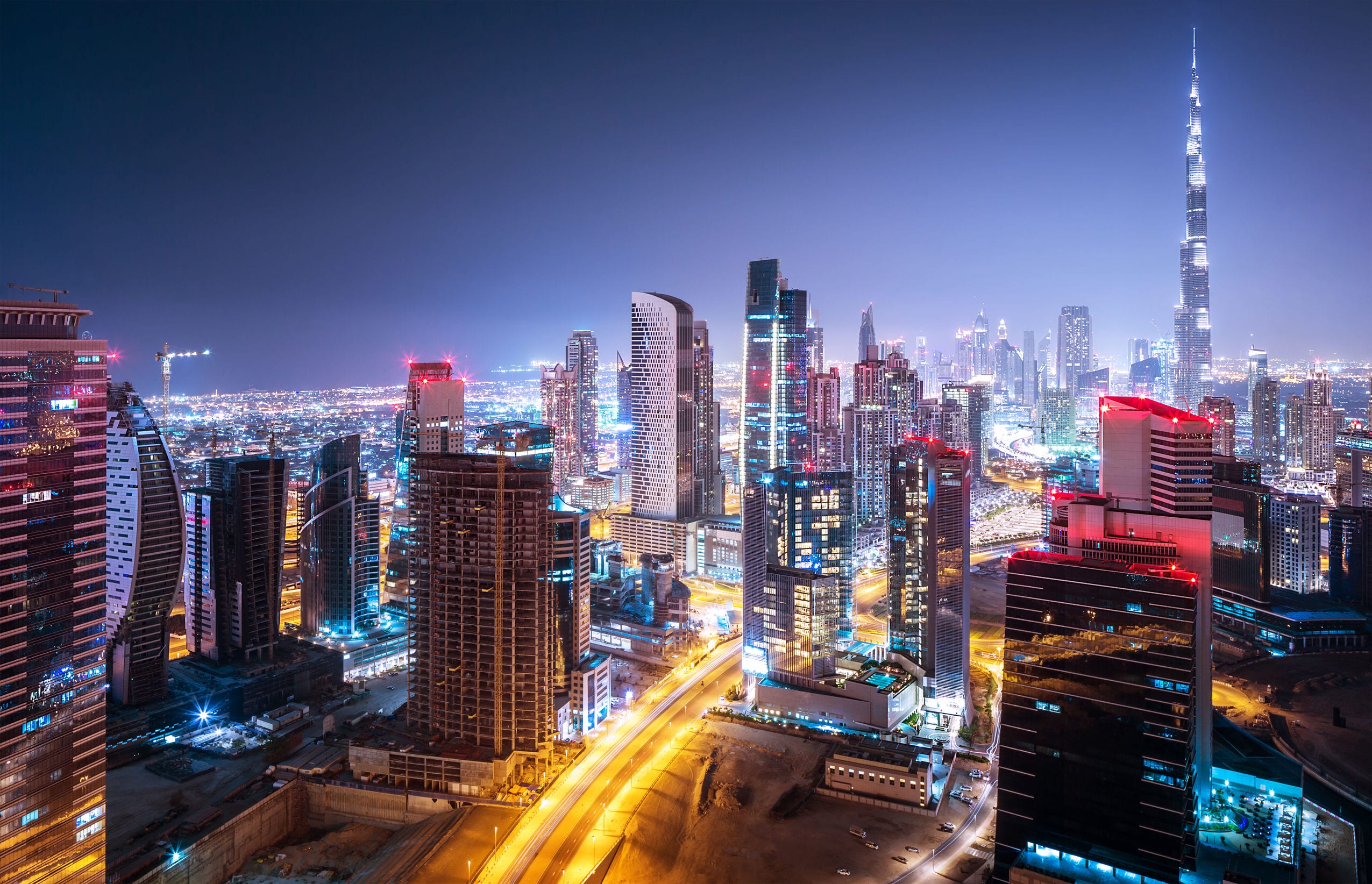
“One of the largest and most unregulated financial centres in the world, with huge turnovers in undocumented movements of gemstones – including those originating in the world’s worst conflict areas – gold and cash, and located at the strategic crossroads of the Gulf, South Asia and Africa, Dubai has long been a financial hub for organised criminal and Islamist extremist groups, as well as a primary transit point for the shipping of contraband. The Dawood Ibrahim gang controls much of this contraband movement from and to South Asia, as well as, crucially, a large chunk of the illegal hawala transactions in the region.”
Lord Robertson, Secretary General of NATO, said back in 2002, “How easy it was for Al-Qaida’s bankers to have five hundred thousand dollars wired from a bank in Dubai for anonymous use in automatic teller machines in Florida and Maine. How difficult it has been, even with the backing of United Nations resolutions and 150 nations, to find out who raised or sent those dollars… illegal money doesn’t just feed other security threats – it also causes them.”
Of particular interest in Dubai has been the important shelter it has offered to many figures in the international crime scene, especially D-Company. Occasionally, under pressure, it has arrested several of its members, including those involved in the 1993 Mumbai bombings. However, they have often escaped prosecution and their extradition to India has not been honoured.
Some of Dawood’s D-Company people were taken into custody in Dubai; that included twenty-six of the Dawood Ibrahim gang, as well as two of Dawood’s brothers – Noora (Noorul Haque) and Mustaqim. Both Noora and Mustaqim – along with Mohammed Dossa, another of the arrested gangsters – were accused in the 1993 Bombay blasts. Both Noora and Mustaqim are permanent residents of Dubai, with substantial business interests in this City State. Indian authorities were unable to extradite them. They were later released for ‘lack of evidence’. Some were allowed to leave for Pakistan.
This set the scene for the liberation, once again, of the most important brother, Anees. The United Arab Emirates (UAE) authorities had announced on December 8, 2002, the arrest of Anees Kaksar Ibrahim in Dubai, just days after he arrived from Pakistan. However, by December 13, Anees had been released on bail and extradited to Pakistan. Back in January 1996, Bahrain authorities had arrested Anees, but he was later sent to Dubai and, on the alleged wrangling of some of Dubai’s rulers, he found his way back to Pakistan. By 1998, he was arrested again in Dubai, charged with the murder of a former associate, Irfan Goga, and freed within two days for ‘lack of evidence’. Anees traveled regularly to Dubai, where he owns several properties, and a combination of legitimate and illegitimate businesses. Anees has been the working head of D-Company, ever since Dawood’s role was reduced because of his depression, and visits to doctors in Karachi, Pakistan where he is ‘protected’ by Pakistani soldiers.
He is not alone in Dubai. “Indian Mafiosi” who substantially owe their success to operations based in Dubai at one time of their career or another, include: Abu Salem currently in custody in Portugal on charges of travel documents fraud, but wanted by both the US and India for involvement with terrorist activity; Aftab Bhatki, who controls the entire fake currency operations in India on behalf of Dawood Ibrahim, and who has an Interpol Red Corner notice against him on India’s request; Raju Anadkar, perhaps the largest money launderer in the region; Babloo Shrivastava, who controlled his kidnapping and extortion empire in India from Dubai, until he made the mistake of travelling to Singapore and was nabbed and extradited to India where he currently bides his time in jail; Chhota Shakeel, another D-Company associate, who controlled operations in Mumbai from Dubai; Chhota Rajan, a former Dawood man, now a bitter enemy, who the ‘Company’ tried to assassinate in Bangkok in November 2000; and, of course, Dawood Ibrahim himself, though he now finds residence in Karachi, under the ISI’s protection, where it is safer than Dubai.
A substantial volume of illegal trade to and from Russia also passes through Dubai, and the Russian mafia has now established a significant presence there. The US is also said to be ‘advising’ Dubai on how to prevent the ‘abuse’ of its facilities as a free trade zone by criminal and terrorist groups. US investigators are currently looking into large volumes of clandestine (hawala) financial transactions by various terrorist fronts connected with al Qaeda, especially the movement of escalating volumes of gold in innumerable unaccountable transactions since the collapse of the Taliban regime in Afghanistan. Indeed, Dubai is a veritable Utopia as a secure base for criminal and terrorist financial operations that target other countries.
Although Dubai hosts a wide variety of gangsters from the subcontinent, they don’t always get along with each other. This was particularly true in the battles, assassination attempts and mayhem between the forces of Dawood and Chhota Rajan after their split and the rise in communalism in the ranks of organised crime. Dubai authorities have always said that the reason they didn’t extradite the various Indian gangsters, but let them ‘escape’ to Pakistan or India, was that they wanted to avoid a ‘turf war’ in Dubai’s streets. An additional factor was the struggle within D-Company between Dawood’s right-hand man, Chhota Shakeel and Anees Ibrahim over who would control D-Company in Dubai. This conflict has come to a head with the death of Chhota Shakeel.
Who Was Chhota Shakeel?
The life story of the man known as Chhota Shakeel is an interesting one. Shakeel was born Mohammed Shakeel Babu Miyan Shaikh, and began his professional life as a travel agent in the Dongri in south-central Mumbai, a lower-middle class area. Little is known how he ended up in organised crime, but by the late 80s he appeared as one of the early members of D-Company, along with Bishal Cheetah, Johnny Akhawat and Liger Bhai (also known as Mushu Bhai). Originally he was part of the inner circle that fixed matches, gambling and hawala deals. By the late 80s, he had become a vital part of the group and was among those that Dawood brought over with him to Dubai in 1988. As the Mumbai Mob civil war kicked off in the early 90s, Shakeel fled to Pakistan where he received protection by the ISI.
While in Pakistan he worked hard at establishing a relationship with Rahim Merchant, a wealthy Pakistani that lived in an affluent area of North Karachi and often went under the name ‘Dogla’. Dogla would come to be an intermediary on behalf of Shakeel, often speaking on the man’s behalf. While keeping a healthy set of investments in real-estate, weapons and narcotics in association with Afghan and Colombian criminal groups, he began to diversify. The new focus became mines in Africa, which produced so called conflict diamonds. These diamonds would then be smuggled to Ukraine, where the Odessa Mafia would sell arms in exchange for them.
Using the profits from the diamond-for-arms trade, Shakeel continued to invest heavily in Africa as well as building his real-estate empire. Soon, he had invested enough to receive citizenships in Botswana and Malawi, and have property investments across the Middle East and Africa in addition to his existing real-estate in India, Pakistan and the US.
As many other Mumbai-mafiosas, he became a principal financier in Bollywood and of Hindi films.
![Image [Known as the "CEO of D-Company, Chhota Shakeel is not one for photographs. In 2018, via Indian agencies, India Today accessed an old picture of Chhota Shakeel (L)(1980s) and a photo (R) believed to have been taken in 2016]](https://limacharlienews.com/wp-content/uploads/2019/02/Chhota-Shakeel.jpeg)
Shakeel organised his own group of followers in response and the ISI had to intervene to try and make peace between Shakeel and Anees and to stop any internal fighting in D-Company. Dawood played only a passive role and seemed to become even more reclusive. He wanted to maintain his thirty-year friendship with Shakeel (who had attempted the assassination of Chhota Rajan for him in Bangkok), and his ties with his brother Anees. This created problems in the organisation as D-Company chiefs in Mumbai and overseas were never sure whose orders were to be obeyed.
This confusion continued until it was confirmed that Chhota Shakeel had died on January 6, 2017. The two sides agreed on a minor figure in D-Company to take over active leadership of the organisation until Dawood and the ISI agreed on how to proceed. That replacement, however, died of a heart attack in Tajikistan in mid-2018. Dawood announced that his brother, Anees, would take over the key post in D-Company on January 5, 2019, at the anniversary of the death of Shakeel a year earlier. There had been some confusion about whether Shakeel had really died because the voice of ‘Dogla’ his speaker was intercepted on phone monitors, confusing the confirmation of Shakeel’s death.
The Continuity of the Criminal-Political-Terrorist Enterprise
Despite the change in the structure of D-Company, the symbiosis of organised crime, terrorism and the competing nation states of the subcontinent has not ended. Still less has the powerful role played in this endeavour by Dubai.
The U.S. pullout of Afghanistan will only serve to exacerbate these divisions. Corruption and terrorist activities will give financial impetus to the various criminal fraternities which support and thrive on these conflicts.
[Read more in Part 2: Greater China]
Dr. Gary K. Busch, for Lima Charlie News
[Edits by Anthony A. LoPresti, John Sjoholm and Diego Lynch]
Dr. Busch has had a varied career-as an international trades unionist, an academic, a businessman and a political intelligence consultant. He was a professor and Head of Department at the University of Hawaii and has been a visiting professor at several universities. He was the head of research in international affairs for a major U.S. trade union and Assistant General Secretary of an international union federation. His articles have appeared in the Economist Intelligence Unit, Wall Street Journal, WPROST, Pravda and several other news journals. He is the editor and publisher of the web-based news journal of international relations www.ocnus.net.
Lima Charlie provides global news, featuring insight & analysis by military veterans and intelligence professionals Worldwide.
For up-to-date news, please follow us on twitter at @LimaCharlieNews
Part 2: Greater China:
In case you missed it:

![Image Organised Crime in Asia - A Convenient Relationship [Lima Charlie News]](https://limacharlienews.com/wp-content/uploads/2019/02/Organised-Crime-in-Asia-Lima-Charlie-News-e1549726614562.jpg)
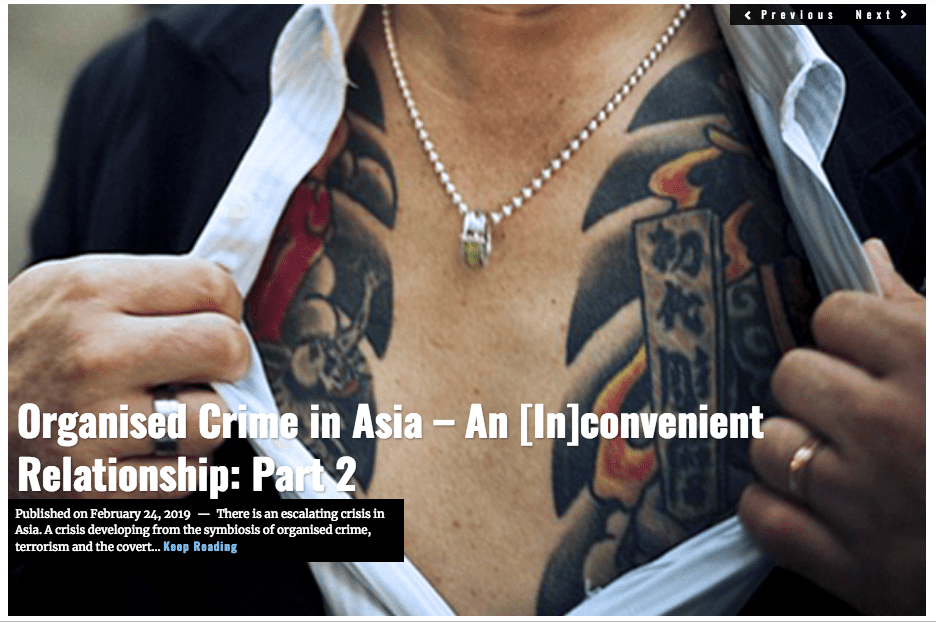
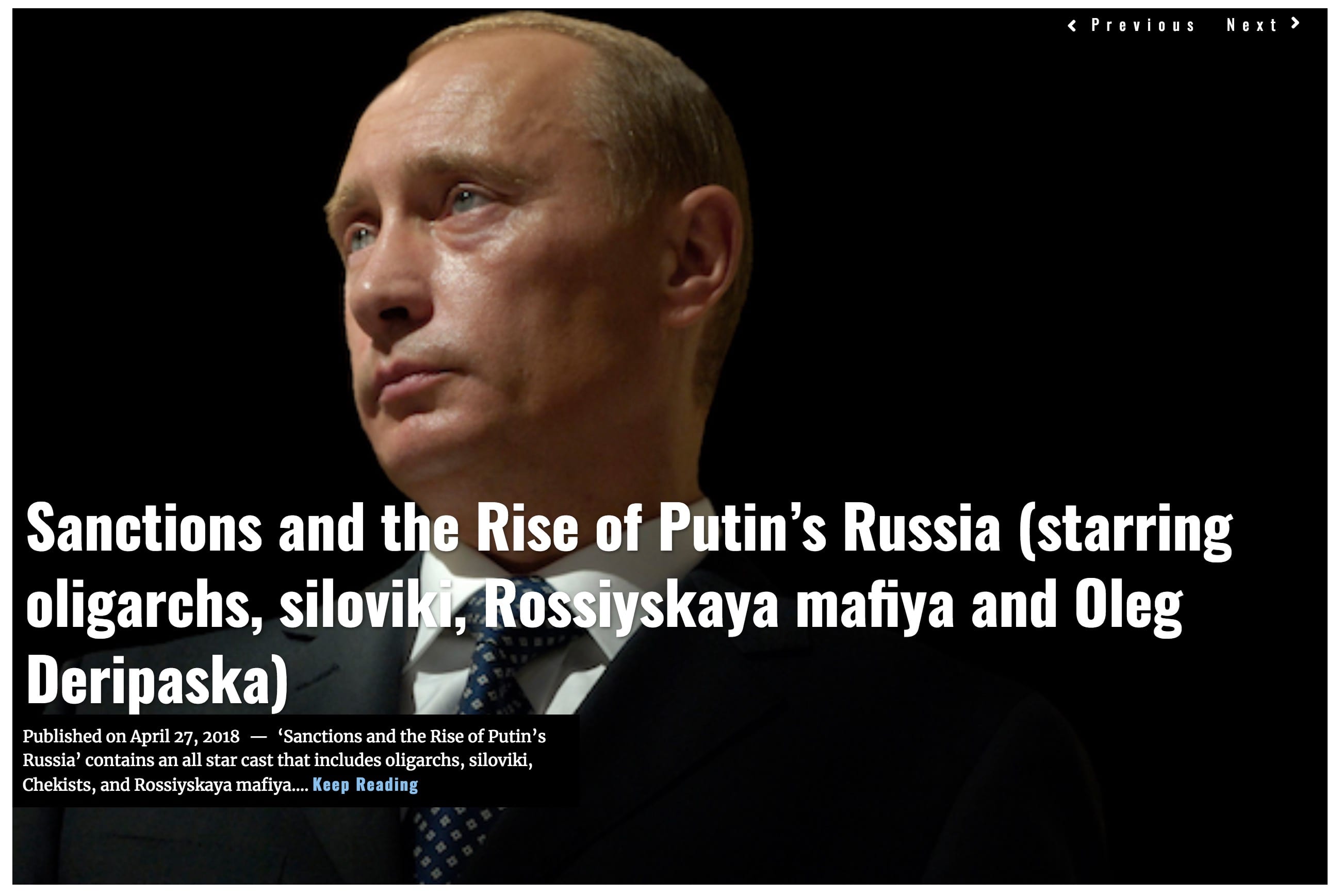
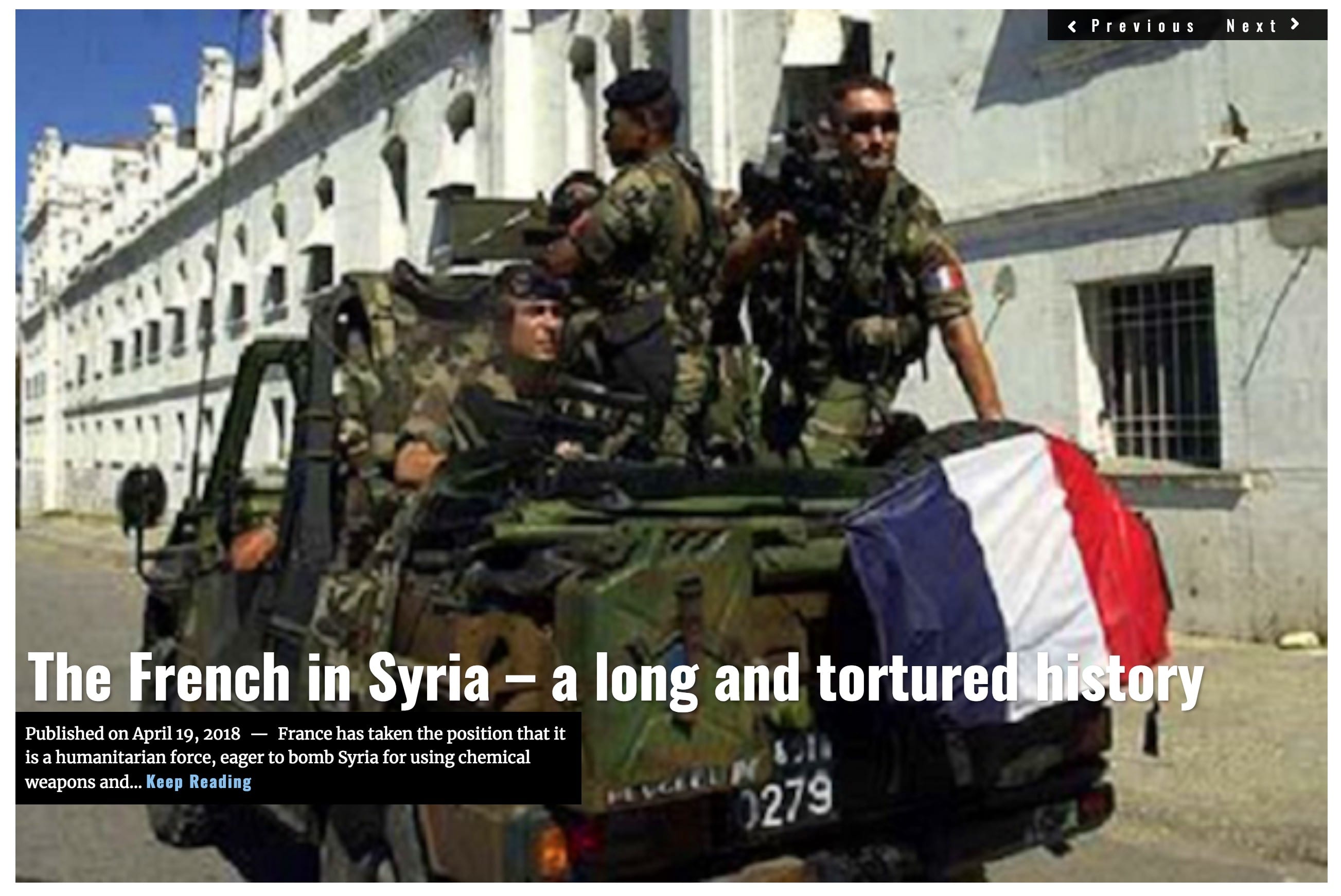

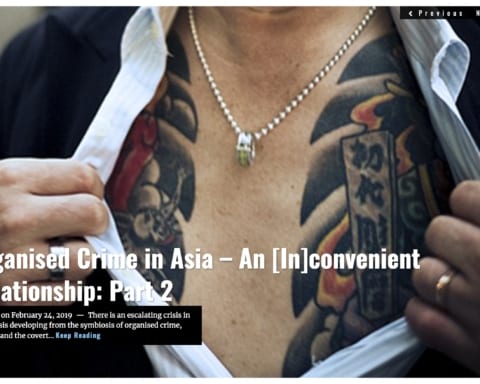
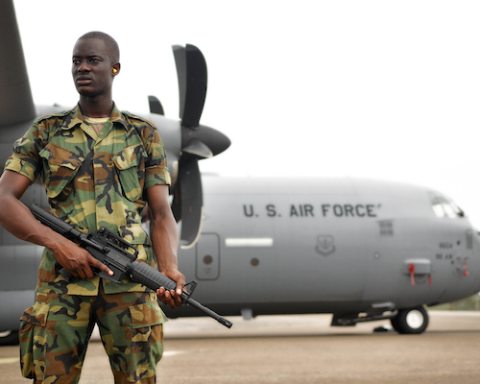

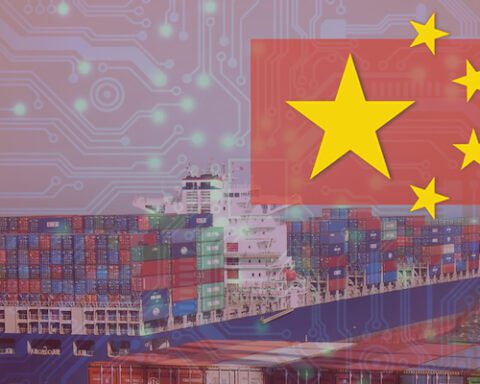

![Blossoming Russo-Turkish alliance leaves U.S., NATO behind [Lima Charlie News]](https://limacharlienews.com/wp-content/uploads/2019/07/Russia-Turkey-alliance-leaves-U.S.-NATO-behind-480x384.png)
